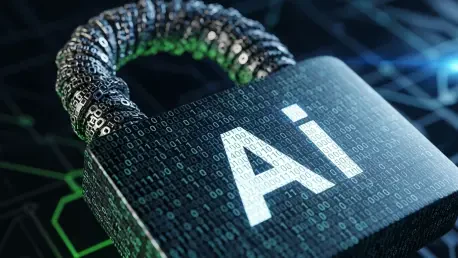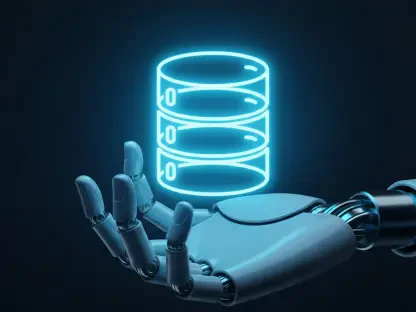Introduction to AI-Assisted Software Development
The software development landscape is undergoing a seismic shift as AI tools become indispensable allies for coders worldwide, transforming how software is created. With platforms like GitHub Copilot, Cursor, and Windsurf, developers are witnessing unprecedented boosts in productivity, slashing the time required for routine coding tasks while leveraging machine learning to suggest code snippets, complete functions, and even architect entire modules.
This transformation is not merely a trend but a cornerstone of modern development practices. Major tech companies and startups alike are integrating AI-driven workflows to stay competitive, with adoption rates soaring across industries. The ability to generate code rapidly has empowered teams to focus on innovation rather than repetitive tasks, marking a significant evolution in coding methodologies.
Behind this revolution stand key industry players like Microsoft, Google, and numerous emerging firms driving technological advancements. Their contributions have led to smarter, context-aware AI assistants that adapt to specific project needs. As reliance on these tools grows, understanding their impact on efficiency and creativity in development becomes critical for stakeholders across the tech ecosystem.
Understanding the Security Risks in AI-Generated Code
Key Vulnerabilities and Trends
Despite the advantages of AI-assisted coding, significant security concerns loom large. Common vulnerabilities in AI-generated code include insufficient input validation, reliance on outdated cryptographic techniques, and the use of unsupported or deprecated components. These flaws can expose applications to exploits, undermining the integrity of software systems.
Beyond basic code generation, AI tools are increasingly involved in complex tasks such as system design, service creation, and providing enhancement recommendations. While this expanded role amplifies their utility, it also introduces new risks, as the generated outputs may not always adhere to secure coding principles. The evolving capabilities of these tools demand equally dynamic security measures to keep pace with emerging threats.
The urgency for integrated security solutions has never been greater. As AI systems become more autonomous in decision-making, the potential for introducing subtle yet critical flaws grows. Addressing these challenges requires a proactive approach to embedding security checks within the AI development process, ensuring that innovation does not come at the expense of safety.
Scope and Impact of Security Gaps
Data reveals a troubling reality: a significant portion of AI-generated code contains vulnerabilities that could compromise software security. Studies indicate that the frequency of such flaws correlates directly with the rising usage of AI tools, with many developers unaware of the risks embedded in automated outputs. This gap poses a tangible threat to application integrity across sectors.
The impact of these security lapses extends beyond individual projects, contributing to a broader increase in incidents tied to flawed code. As AI tool adoption accelerates, the volume of potentially insecure code entering production environments rises, creating a ripple effect that can erode trust in digital systems. Industries reliant on robust software, such as finance and healthcare, face particularly acute risks.
Looking ahead, unaddressed security gaps could severely hinder the adoption of AI in development if trust diminishes. The potential for high-profile breaches or systemic failures underscores the need for immediate action. Without robust safeguards, the very tools designed to streamline coding could become liabilities, stunting technological progress and industry confidence.
Cisco’s Project CodeGuard: A New Security Framework
Cisco has stepped into this critical arena with Project CodeGuard, an open-source initiative designed to fortify the security of AI-generated code. This framework offers a unified, model-independent approach, ensuring compatibility with a wide array of AI systems and development environments. Its introduction marks a pivotal moment in addressing the inherent risks of automated coding.
At its core, CodeGuard integrates security rules derived from established standards like OWASP and CWE into multiple phases of the development lifecycle, including design, code generation, and post-generation analysis. These rules aim to enforce best practices, such as proper input validation and the avoidance of hard-coded secrets, thereby reducing the likelihood of common vulnerabilities from the outset.
By embedding security directly into the AI-assisted workflow, Cisco seeks to shift the paradigm from reactive vulnerability patching to proactive prevention. This approach is especially relevant as AI tools expand their scope beyond simple coding to influence architectural decisions. CodeGuard’s framework provides a foundational layer of defense, aiming to make secure coding an inherent part of the development process.
Challenges in Securing AI Coding Workflows
While Project CodeGuard offers a promising solution, it is not a cure-all for security issues in AI-assisted development. Cisco acknowledges that the framework serves as an additional safeguard rather than a comprehensive fix, necessitating continued reliance on traditional practices like peer reviews and manual audits. Its role is to minimize obvious errors, not to replace human oversight.
Balancing the speed of AI-driven development with the rigor of security protocols remains a formidable challenge. The rapid pace at which AI tools generate code can sometimes outstrip the ability to thoroughly vet outputs for risks, creating tension between efficiency and safety. Developers must navigate this trade-off, ensuring that haste does not compromise the integrity of their work.
Adoption hurdles also loom on the horizon, including the complexity of integrating CodeGuard into existing systems and the need for continuous developer training. Overcoming these barriers requires strategic planning, such as providing accessible documentation and fostering a culture of security awareness. Addressing these challenges head-on will be crucial for the framework to achieve widespread impact in development communities.
Regulatory and Compliance Considerations
The regulatory landscape surrounding software security and AI-generated code is becoming increasingly stringent as risks gain visibility. Governments and industry bodies are scrutinizing the outputs of AI tools, pushing for guidelines that ensure accountability and safety. Navigating this evolving terrain is essential for organizations leveraging automated coding solutions.
Industry standards like OWASP and CWE play a pivotal role in shaping secure coding practices, providing benchmarks that tools like CodeGuard can build upon. Adherence to these frameworks not only mitigates vulnerabilities but also aligns development processes with globally recognized best practices. Such alignment is critical for maintaining credibility in a competitive market.
Compliance with regulations is equally vital in managing risks associated with AI-generated code. As policies evolve, they are likely to impose stricter requirements on how AI tools are used in software creation, potentially influencing adoption patterns. Staying ahead of these changes ensures that organizations can harness AI innovations without falling afoul of legal or ethical boundaries.
Future Directions for CodeGuard and AI Security
Cisco envisions a robust roadmap for CodeGuard, with plans to expand support for additional programming languages and integrate with a broader range of AI coding tools starting from this year through 2027. Future iterations will also explore automatic rule validation, enhancing the framework’s ability to adapt to new threats dynamically. This forward-thinking strategy aims to keep pace with the rapid evolution of AI technologies.
Community collaboration stands as a cornerstone of Cisco’s approach, with a public GitHub repository inviting contributions from security experts, developers, and researchers. This open-source ethos encourages the submission of new security rules and feedback, fostering a collective effort to refine the framework. Such inclusivity is expected to drive innovation and ensure that CodeGuard remains relevant across diverse use cases.
Broader industry trends point toward a growing reliance on open-source solutions to tackle shared challenges in AI security. The pooling of expertise and resources reflects a consensus that no single entity can address these issues alone. As collaborative efforts gain traction, the tech sector is poised to establish stronger, more resilient defenses against the vulnerabilities of AI-generated code.
Conclusion
Reflecting on the insights gathered, it is clear that Cisco’s Project CodeGuard marks a significant stride in addressing the security challenges of AI-generated code. The initiative lays a critical foundation for safer coding practices by embedding industry-standard rules into the development lifecycle. Its impact is evident in the potential to reduce common vulnerabilities without sacrificing the efficiency that AI tools bring to the table.
Moving forward, the focus shifts to actionable steps, such as expanding the framework’s capabilities and fostering deeper community engagement. Encouraging widespread adoption through accessible training and seamless integration emerges as a priority to maximize its reach. These efforts aim to solidify secure AI coding as an industry norm, ensuring that innovation and safety go hand in hand.
Lastly, the broader tech ecosystem is prompted to consider investing in collaborative platforms and open-source initiatives as a sustainable path toward robust security. Establishing partnerships and sharing knowledge promises to fortify defenses against evolving threats. This collective approach offers a blueprint for navigating the complexities of AI-driven development with confidence and resilience.









